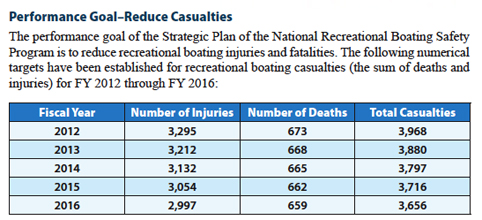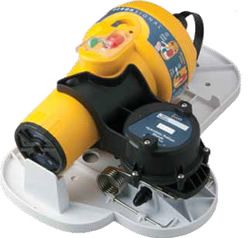Should boaters who travel more than three miles offshore in the U.S. or Great Lakes be required to carry an EPIRB, a personal locator beacon, some other form of emergency locator beacon? That is the question that West Marine Vice President Chuck Hawley, vice-chairman of a task force set up by the National Boating Safety Advisory Council, asked recently in the West Marine newsletter. According to Hawley, the U.S. Coast Guard is contemplating such a carriage requirement, and the task force, along with other representatives of the search and rescue community, marine equipment manufacturers, and boating groups, are working to come up with their own recommendations.

Currently, boating safety laws in Australia require recreational boaters who travel more than two miles offshore to carry 406 MHz EPIRBs. While the Coast Guard has proposed tighter carriage requirements for U.S. recreational boaters in the past, these have generally been opposed by boating advocate groups like BoatUS. According to a recent article in Power and Motoryacht, BoatUS is taking no position on mandatory emergency beacons, awaiting the Coast Guards cost-benefit analysis. According to the article, the Washington, D.C., consulting firm BayFirst Solutions has drawn up a cost-to-benefit analysis for the Coast Guard that makes a strong case for mandatory beacons.
But what emergency locator beacons to use? The Coast Guard has poured about $1 billion into its new Rescue 21 distress-calling network aimed at providing direction-finding and filling gaps in coverage for DSC VHF distress calls. Could not a DSC distress call qualify as a “emergency locator beacon”? What about the current trend toward satellite emergency notification devices (SENDs), such as the SPOT locator, Cerberus, or the DeLorme InReach? The versatility of these newer devices have already led some to question the value of EPIRBs for the majority of boaters. Should a SPOT locator qualify as an “emergency locator beacon?”
In the West Marine newsletter article, Hawley describes the job that he and his fellow task force members face in making a cost-benefit analysis of the various options: If you were in a position to create a regulation that would impact all boaters who go more than 3 nautical miles offshore, how would you maximize the life-saving potential while minimizing the cost to boaters? In our task force discussions, we generally look at the annual cost of the device (perhaps $25 in the case of a PLB) X the number of boats that would be outfitted (perhaps 500,000) compared to the lives saved annually (perhaps 100) and the value of that life (generally considered to be $5M or so). . . . If you use these values, you arrive at an annual benefit of $500M in lives saved at a cost of $12.5M, or a 1:40 cost-benefit ratio. Sounds like a good deal (presuming the numbers are right). Note that this analysis doesn’t include the benefit of reduced SAR costs due to shorter searches, possibly with fewer Coast Guard assets.

It is clear here that Hawley is giving a hypothetical example of how the task force looks at a cost-benefit analysis, since saving 100 lives per year with any distress-calling device seems highly unlikely. According to the National Boating Safety Advisory Councils 2012-2016 National Recreational Boating Safety Program Strategic Plan, the goal is to reduce the number of deaths each year by about four deaths per year and the number of injuries by about 60 per year by 2016. Along with strengthening carriage requirements, the strategic plan outlines several means of achieving these overall safety goals, including boater certification, outreach, training, and more on-the-water education. Would not these measures have a greater impact on boater safety than an EPIRB requirement?
Ultimately, Hawley foresees the task force recommending a layered approach to any new requirements. Vessels operating from 3 to 10 nautical miles offshore, for example, would comply with a VHF radio equipped with DSC capability or some form of “emergency locator beacon,” while those venturing more than 20 miles offshore would be required to carry an EPIRB, PLB, or some other type of approved emergency beacon.







































